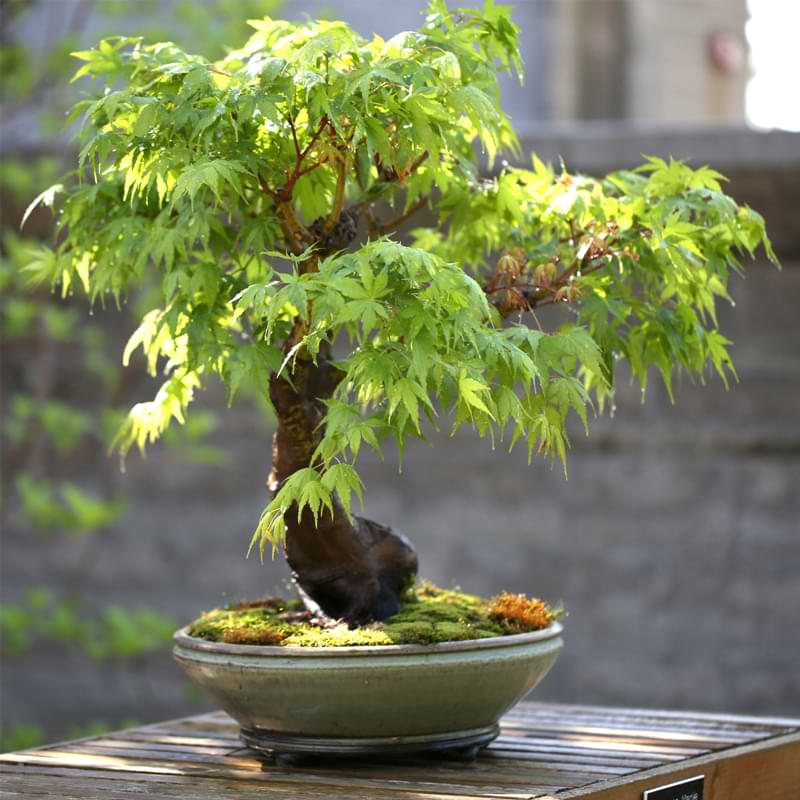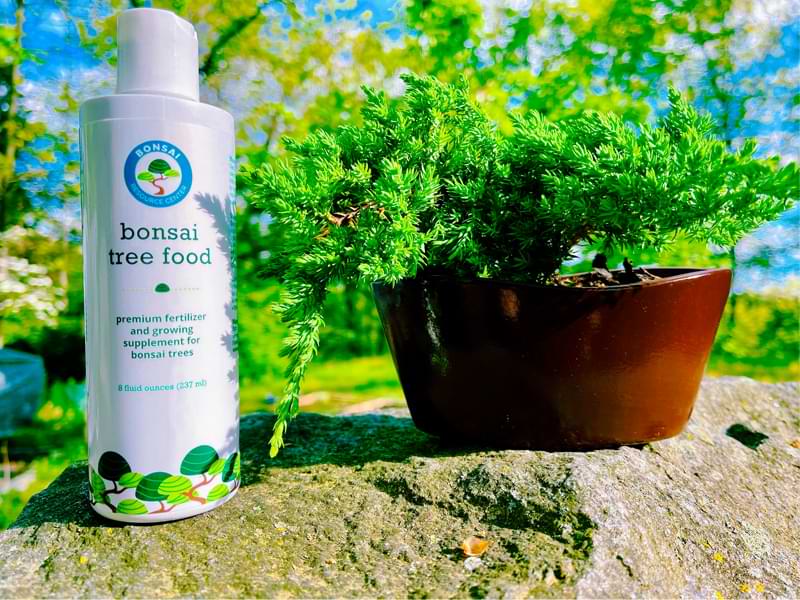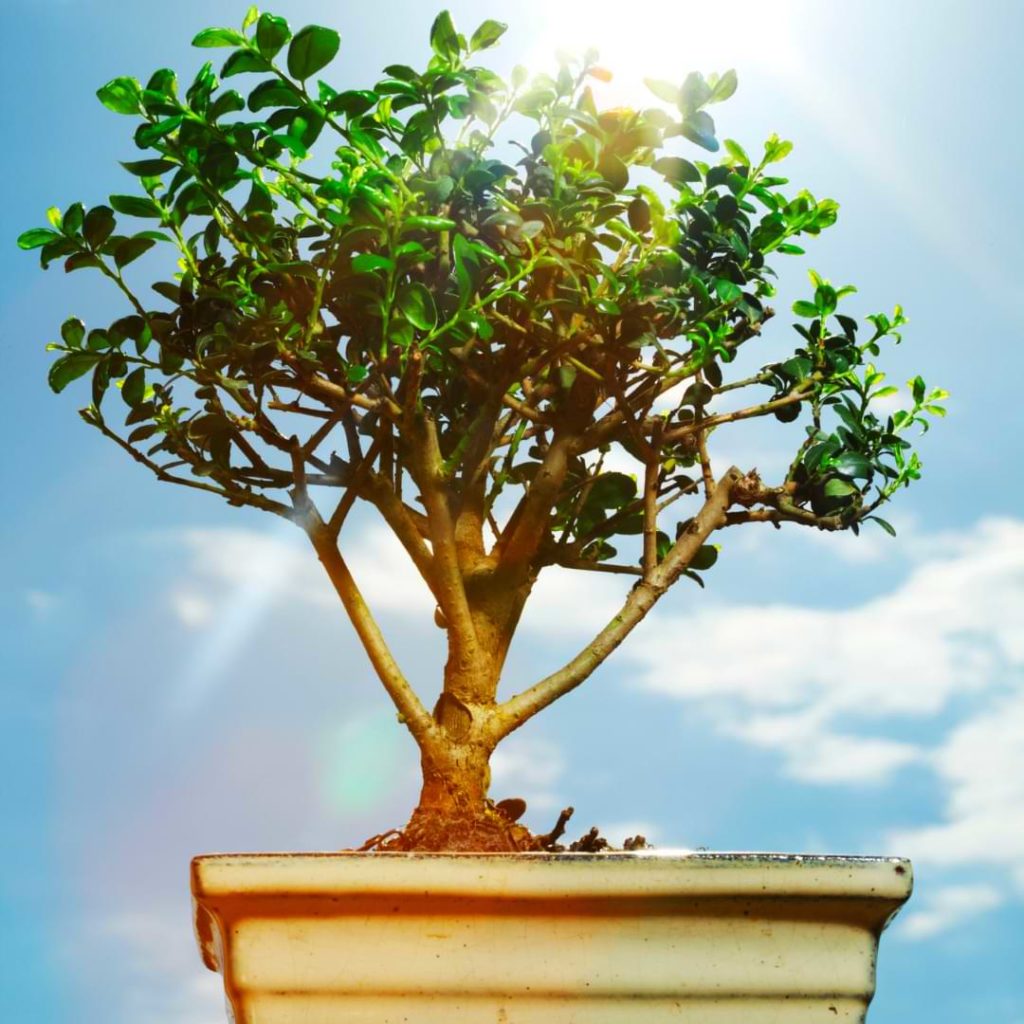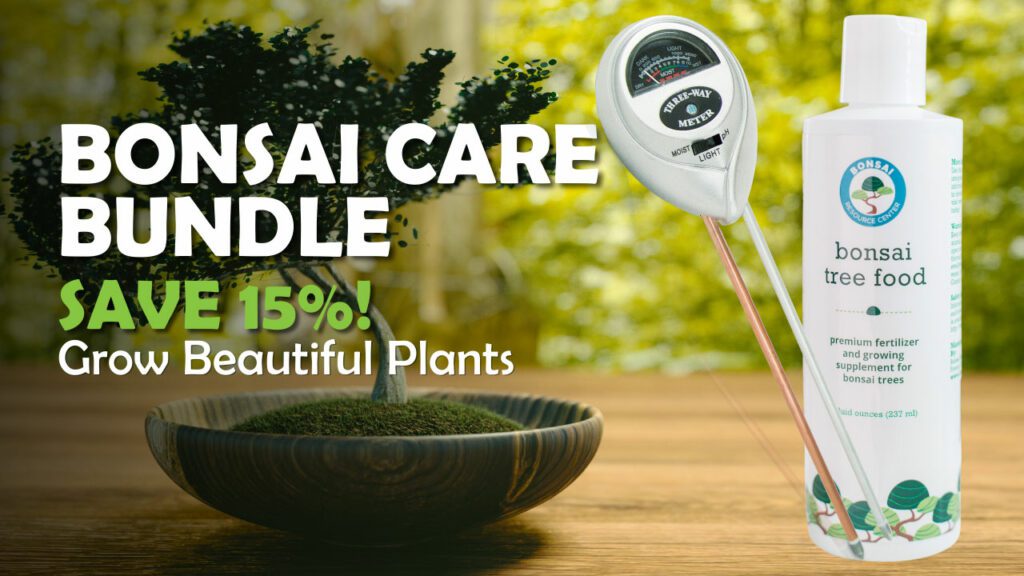Bonsai is not a species of tree, but rather the art of growing regular trees in a container and training the trees to remain miniature while taking on the form of the mature tree. Almost any tree can be made into a bonsai tree if you have the time and the resources to provide the care the bonsai needs.
Bonsai requires patience as it can take many years for bonsai trees to mature. It’s important that trees grown as bonsai receive the proper care, including the right amount of sunlight, to stay healthy and grow properly.
Different bonsai have different needs. Some bonsai need full sun while others are happier in more shaded areas. Keep reading to find out how to take the best care of the bonsai you have.
Do Bonsai Trees Need Full Sun?
Bonsai trees need different amounts of sunlight depending on the species of tree. However, typically most of the popular species of trees used in bonsai benefit from full sun. There are a few shade-loving trees that do well as bonsai, but just like their full-size counterparts, most bonsai trees do better with more sun exposure.
Where to Place Bonsai Trees Indoors
The general recommendation is to keep bonsai outdoors as much as possible. However, when the temperature falls outside the range that the bonsai trees would experience in their natural environment, you’ll have to provide extra protection and most likely bring your bonsai trees indoors.
How much sunlight your bonsai needs indoors also depends on the species of tree. Usually you’ll want to provide as much light as possible if your bonsai continues growing over the period (usually the winter) when it’s indoors.
Here’s what to consider.
Bonsai Trees for Low Light
The list of bonsai trees that grow well in low light indoors is not too long. Some bonsai will tolerate low light for a few months in the winter, especially if the tree species slows down growth or goes dormant during the winter.
If you’re looking for bonsai that will grow in low light year-round, you have a few options; but even with these options, you’ll still want to make sure they have some access to natural light while indoors. The best bonsai trees for low light are rubber trees, lucky bamboo, north island pine, Madagascar dragon tree, and Hawaiin umbrella tree.
Note that with the exception of north island pine, there’s some debate over whether the other species above can truly be made into bonsai because they do not respond to shaping and pruning in the same way other bonsai trees do. However, they can all produce lovely miniature specimens of trees that can survive indoors. It’s more of a debate over the label or classification of bonsai because these species can result in specimens that look very similar to bonsai.

Will bonsai trees grow in shade?
Tree species grown as bonsai need as much sunlight or shade as their full-size forms. While some tree species prefer shade outdoors, indoor shade provides significantly less light exposure than outdoor shade.
If all you can provide indoors is shaded spots, consider using grow lights to give your bonsai tree some access to light. Plants need sunlight for photosynthesis, so bonsai need at least some level of sunlight to grow.
Where should I position bonsai in winter?
The best position for bonsai in winter depends on your climate and the species of bonsai tree. Here are the different options to help you decide what’s best for your bonsai:
- Indoors in a sunny location: If your bonsai continues growing through the winter and your climate falls below the minimum temperature your bonsai species can withstand, bring your bonsai indoors. Place it in the sunniest spot you can find so it can continue to grow during the winter. Growth typically slows down during the winter months, but bonsai species that are native to tropical or semi-tropical environments will likely continue to need access to as much sunlight as possible during the winter.
- An unheated garage or storage area: If your bonsai tree goes dormant during the winter, and your climate falls below the minimum temperature your bonsai species can withstand, place the bonsai in an unheated area protected from the elements. Bringing dormant trees indoors can alter their natural growth cycle. Dormant trees may need protection from frost or extreme cold, but they won’t need access to sunlight until they start growing again.
- Outdoors with no change: If your bonsai is well-suited to your climate, you may be able to leave your bonsai outdoors during the winter. Picking a tree species that is native to your area or to an area with a similar climate can make caring for your bonsai much easier.
Signs of Light Deprivation
Light deprivation can be a huge issue for bonsai. While bonsai trees have the same requirements as full-size trees, bonsai generally are more sensitive than full-size trees. Lack of light can affect bonsai much sooner.
Lack of light generally occurs most often when bonsai is brought indoors. It’s normal to see small changes in your bonsai as they adjust to lower levels of light indoors, but you also need to know the signs that indicate poor light conditions are having a drastic impact on your bonsai.
Long, Leggy Growth and Big Leaves
Two major signs you may notice in your bonsai’s foliage are long, leggy growth and big leaves. Both show that your bonsai is doing everything possible to get closer to the light source provided and take in more light.
If you notice this issue, move your bonsai to a sunnier location or begin supplementing with artificial lights. Your bonsai is making it clear there’s a problem, so try to fix the issue before it becomes damaged.
Moldy Soil
Lack of sunlight can also mean that your bonsai needs less water than before. If your bonsai isn’t growing as much, it won’t use as much water. Also, there’s generally less air circulation indoors, which allows mold to develop.
Moldy soil can be a warning sign that your bonsai isn’t getting enough light. To solve this problem, move your bonsai to a sunnier area. Also consider adding a fan or other device nearby to help with air circulation.
Pests and Diseases
Your bonsai is more susceptible to pests and diseases when it’s weak from lack of light. An unhealthy tree can’t bounce back from damage the same way a healthy one can.
Be sure your indoor bonsai either receives enough natural light or artificial light that it remains healthy. If your bonsai suffers from pests or disease, treat the problem, but also make sure you’re giving your bonsai enough light to make recovery easier.
Where to Position Your Outdoor Bonsai
Position outdoor bonsai as close as possible to the conditions their in-ground counterparts enjoy. There are a few exceptions. Because bonsai are so much smaller and their pots dry out more quickly than the ground, you may need to shield some bonsai from harsh sun in the middle of the day. A small canopy or other object to block midday sun can be helpful for certain bonsai species.
Are Bonsai Trees Winter Hardy?
If your bonsai species grows natively in your environment or in an environment with a similar climate, then your bonsai tree may be winter hardy for you. This makes caring for you bonsai significantly easier because you don’t have to worry about transitioning your bonsai to a new location when the temperature drops.
Some species may need to be moved into a sheltered location if strong winds are common in your area because this can dry out some bonsai too quickly. Sunlight that’s too strong can also have the same effect during the winter. Bonsai may not be able to take up water quickly enough if the roots freeze.
More mature bonsai trees are usually able to withstand winter a little better than new bonsai trees. However, knowing the species of your bonsai is important. If you have a tropical or even semi-tropical species, a little bit of cold or frost can cause damage. Monitor the temperature to decide when it’s time to move your bonsai indoors if needed.
Besides being dependent on the bonsai species, winter hardiness also depends on your climate. A species that is winter hardy in Florida is less likely to be winter hardy in Maine.
General Bonsai Tree Care
Bonsai have unique needs depending on their species. What’s best for one species of tree will not always work well for others. It’s important to find out what species of bonai you have and what conditions work best for that species.
Temperature Control
Most bonsai do best when grown outside during the warmer months. You may need to shield the bonsai from harsh sun during midday and water more frequently if the temperature gets too warm outdoors.
Humidity Levels
If you bring your bonsai indoors to overwinter, you may need to raise the humidity level in your home, because heating systems can dry out the air to levels below what tropical species require. Misting can help a little bit, but it won’t make a significant difference. Consider using a humidifier near your bonsai if you aren’t able to provide the correct humidity level for it.
How to Water a Bonsai Tree
Bonsai will need different amounts of water depending on their species and what stage of growth they’re in. Make sure that whatever pot you use for your bonsai has adequate drainage to allow excess water to escape. Some species prefer the soil to dry out more than others between waterings.
Full Sun
Exposing your bonsai to full sun generally requires you to water your bonsai more often. Evaporation happens more quickly, and the bonsai needs additional water when growing quickly. When outdoors during warm months, it’s very unlikely you’ll overwater your bonsai.
Low Light
When there’s not as much light and your bonsai isn’t growing as much, it requires less water. Overwatering is more of an issue when bonsai are brought indoors, so check how damp the soil is before watering bonsai indoors.

How to Fertilize a Bonsai Tree
Bonsai trees typically need fertilizer because they are grown in small pots and have less access to nutrient-rich soil than trees grown in-ground. Bonsai should only be fertilized during their growing season; stop fertilizing if a tree is dormant or will be dormant soon.
While bonsai need a little fertilizer to thrive, don’t go overboard. Too much fertilizer can damage your bonsai’s roots. For most bonsai, a gentle balanced fertilizer is just right. We like Bonsai Tree Food because it’s easy to use every time you water. With an NPK ratio of 3-3-3, it works well for most tree species. Unless you have a tree species that’s particularly picky, a balanced ratio is effective.
Do not use fertilizer spikes designed for full-size trees on your bonsai—this will provide way too much fertilizer at once and damage your bonsai.
Bonsai With Us!
The Bonsai Resource Center is here to help you learn about all things bonsai and provide you the tools you need to keep your plant healthy and strong. Explore our other articles, visit our online shop, and connect with other bonsai lovers in our Facebook group to learn everything you need to know about this rewarding hobby.



